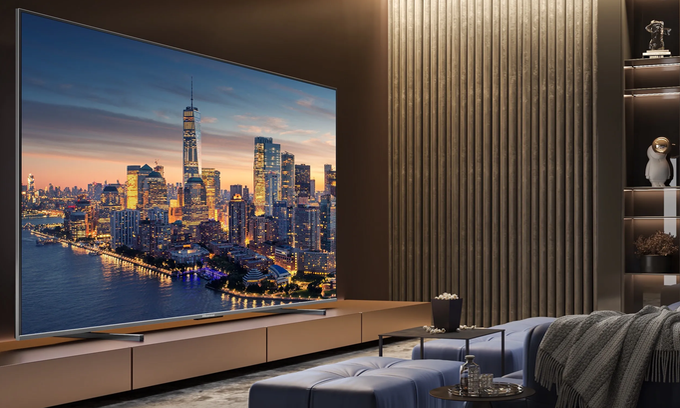In recent years, consumers have increasingly chosen ultra-short throw (UST) 4K laser projectors as an alternative to traditional TV in the living room.
TV vs projector
The rise in popularity of projectors is due to several factors, including:
– solid-state light source (SSL).
LEDs and laser LEDs have a lifespan of over 20,000 hours and generate little heat, eliminating the need for a large internal volume for effective heat dissipation and the use of a powerful, noisy fan. For reference, a laser LED is an LED with an optical resonator, which provides more powerful coherent radiation;
– smart functionality, streaming and wireless technology have radically eliminated the content problem for the projector;
– light engines with ALPD technology have significantly expanded the color gamut of projectors;
– DMD with Xpanded Pixel Resolution (XPR) technology in DLP projectors provided 4K content playback using relatively cheap 1080p chipsets with 2 million micromirrors;
– UST projectors eliminated the main problem of mid-focal models with wires on the floor.
Today, it can only be solved with the help of a complex ceiling mount. The UST projector forms a projection from a very short distance by re-reflecting the light flux using complex aspherical mirrors.

The projectors are still inferior in brightness and contrast. Lower brightness is due to the loss of light reflected from the screen, in contrast to the direct flow from the TV screen. High native contrast today is provided only by LCoS projectors (Liquid crystal on silicon). Its JVC version is called D-ILA (Direct Drive Image Light Amplifier), Sony version is known as SXRD (Silicon X-tal Reflective Display). But they price starts from $ 6,000 and reaches tens of thousands.
But the insignificant difference in image quality is fully compensated by a very reasonable price for a huge image. Last year, tough competition reduced the prices of DLP UST 4K laser projectors to the range of $ 2,000 to $ 3,000.
Huge TVs
It’s curious, but given the consumer popularity, some companies position these models as ‘laser TVs’, causing a skeptical grin from physicists. But formally, any projector with a built-in TV-receiver can be positioned as a TV with a screen outside the case. In fairness, most companies traditionally classify them as UST projectors.
Of course, a huge screen requires a fairly spacious living room. In particular, some ophthalmologists recommend a coefficient of 1.2 between the diagonal and the viewing distance for a comfortable 40° viewing angle. For example, a 100″ screen requires a distance of 120″ / 3 m, a 130-inch image is optimally perceived at a distance of 156″ / 4 m. Probably, fans of viewing on a huge screen should take this aspect into account.
Quite predictably, TV manufacturers cannot indifferently observe this trend. Today, TCL, Hisense and Samsung already offer relatively affordable 100-inch models at a price of $ 2,200 to $ 5,000.
Other companies also offer huge panels, but they are still too expensive. However, Sony BRAVIA XR 98X90L can also be positioned as a relatively inexpensive one.
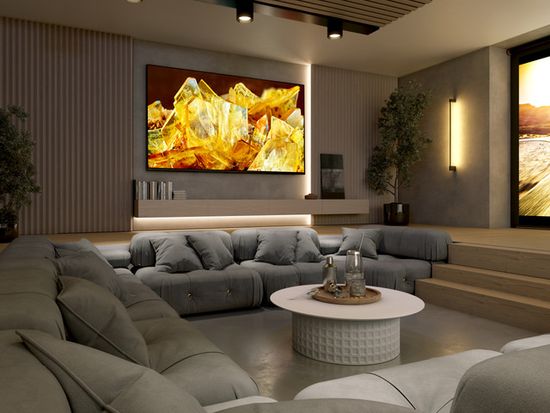
At only $ 6,570, 98-inches TV offers a powerful Cognitive Processor XR, Direct Full Array backlight and XR Triluminos Pro, Dolby Atmos with Sony’s Vertical Surround Engine, S-Force PRO Front Surround and 360 Spatial Sound Mapping, etc. Compared to the Samsung Q80C, it’s much better contrast and black uniformity, which shows up when viewed in a dark room. High HDR brightness, wider color gamut and better color volume provide higher quality playback of HDR content. In fairness, the Samsung is more convenient for viewing in company due to its wider viewing angle, and its lower input lag is ideal for gaming.
‘Budget’ 100-inch TVs
This line includes:
– 98-inch Samsung QLED 4K Q80C – 2023, QLED display, Quantum HDR+, Dolby Atmos, Object Tracking Sound Lite, Direct Full Array, Q-Symphony 3.0, Gaming Hub and 5-year warranty – $ 4,500;
– 98-inch TCL 98R754 and 98C735 (2023, XL Collection, QLED display, Google TV, 4K HDR Pro, 120Hz Motion Clarity PRO, HDMI 2.1, Dolby Vision & Atmos, ONKYO Sound, Voice Control, Alexa Compatible) – $ 2,800 and € 3,900 (C735 is an European version of R754). They are equipped with an LED zone dimming system (FALD), but not miniLED backlight. In particular, the models use Contrast Control Zones-based 192 lоcal dimming zones with regular size LEDs;
– 98-inch TCL QM7 (98QM751G, 2024, QLED display, mini LED backlight with 1,500 local dimming zones, Google TV, 120Hz/144Hz Variable refresh rate or VRR, Dolby Vision IQ, Dolby Atmos, Game Accelerator 240, Alexa support) – $ 3,600;
– 100-inch Hisense 100U76N (2024, QLED display, Native 144Hz, Dolby Vision, FALD, Game Mode Pro, Alexa Compatibility) – $ 2,200.
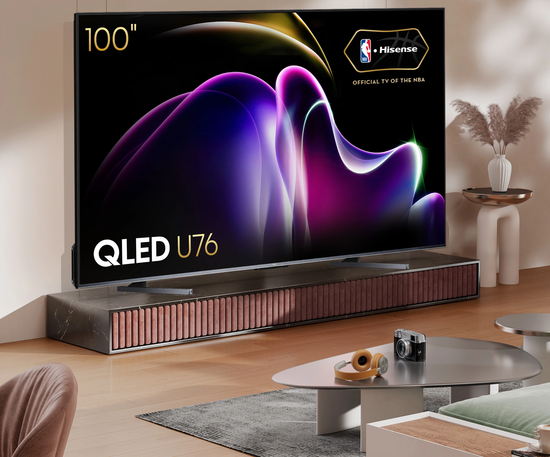
– 100-inch Hisense 100U8K (2024, QLED display, mini LED backlight with 1,620 local dimming zones, 480 Motion Rate, 144Hz Game Mode Pro, Dolby Vision IQ, HDMI 2.1, Alexa Compatibility, 50W 2.1.2ch audio system with 5 speakers) – $ 5,000.
All TVs use a bright and contrast VA panel. The companies use frame interpolation for smooth motion reproduction, including Motion Xcelerator Turbo+ (Samsung, up to 4K@120Hz), Natural Motion 480 (TCL) and Motion Rate 480 (Hisense).
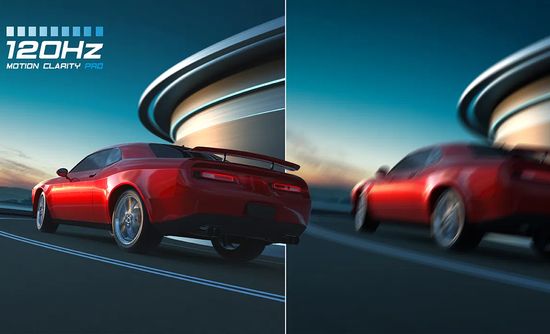
The peak brightness of Hisense and TCL reaches 1,500 nit (cd/m²).
The models use the latest SoCs, including AiPQ Engine (TCL), Neural Quantum 4K processor (Samsung) and Hi-View Engine 4K (Hisense, Media Tek MT9618).
QLED and mini LED
Despite the very affordable price, all the models offer almost a complete set of the most popular technologies.
In particular, they use quantum dot (QD) – based displays. As known, QD technology significantly improves the image quality of LCD TVs by improving the white quality for the backlight. In fact, the TV generates white by combining blue, red and green. Blue comes from the blue LEDs. Red and green are re-emitted by micro particles, the size of which corresponds to the wavelengths of red and green. These particles are sprayed on an additional film between the blue diodes and the RGB filter.
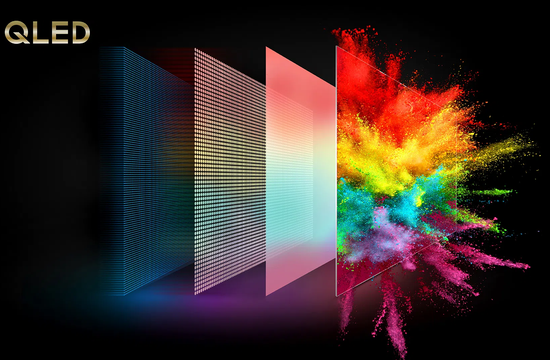
Last year’s cheaper models are equipped with FALD with regular size LEDs and use about 100 local dimming zones. The new models have an innovative miniLED backlight with 1,500 and 1,620 zones in the more expensive TCL QM7 and Hisense 100U8K, respectively.
As known, this technology was presented at CES 2022 in the Samsung Neo, LG QNED and TCL OD-Zero series. In fact, the developers have replaced traditional LEDs into miniature ones, increasing their number to tens of thousands.
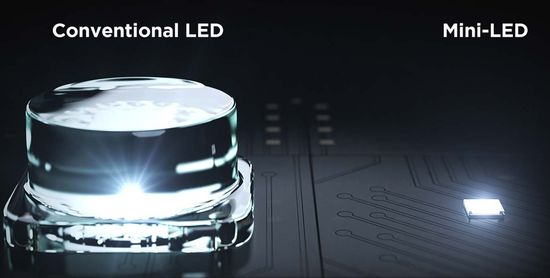
Combined into thousands of local dimming zones with separate control, they dramatically increased the intensity control accuracy depending on the content in different areas of the frame. As a result, the overall image contrast has increased almost to the ‘infinite’ contrast of OLED panels.
Smart functionality (TV OS, voice control, etc), gaming (VRR, Game Mode, etc), video and audio AI processing, powerful multi-channel audio systems, popular technologies (Samsung’s OTS, Dolby Vision IQ, etc.) of all models correspond to the premium level. In fact, small differences in price depending on the backlight used (mini LED or regular) are the main difference.
Conclusion
Samsung is the most expensive of the TVs reviewed ($ 4,500 vs $ 2,800 and $ 2,200 for models without mini LED backlight). But the company offers an impeccable reputation, a 5-year warranty, excellent service, and popular innovative options, including Quantum HDR+, Object Tracking Sound, Q-Symphony and Gaming Hub.
The prices of the Chinese TVs are $ 2,800 / $ 2,200 for TCL / Hisense without mini LED backlight, and $ 3,600 / $ 5,000 for TVs with mini LED backlight. In fact, Hisense offers the most ‘budget’ 100U76N ($2,200) and the most expensive, contrast and bright in this segment 100U8K for $5,000 with 1,620 local dimming zones. The difference between TCL models with different backlights is insignificant ($ 2,800 vs $ 3,600). Therefore, the TCL QM7 with mini LED technology seems more profitable.
So, the Hisense 100U76N ($ 2,200) is ideal as a budget option, the Hisense 100U8K ($ 5,000) is suitable for those who like watching big screen TVs in high quality with a good budget, and the TCL QM7 ($ 3,600) is a superb compromise.
Video demonstrates the new 98″ TCL TV.
